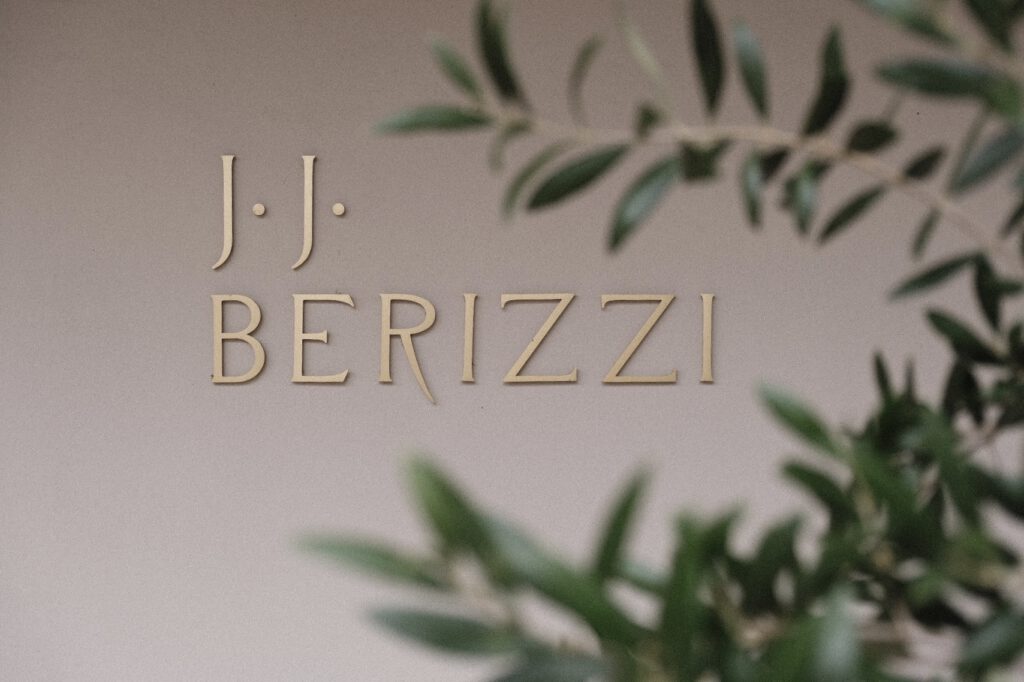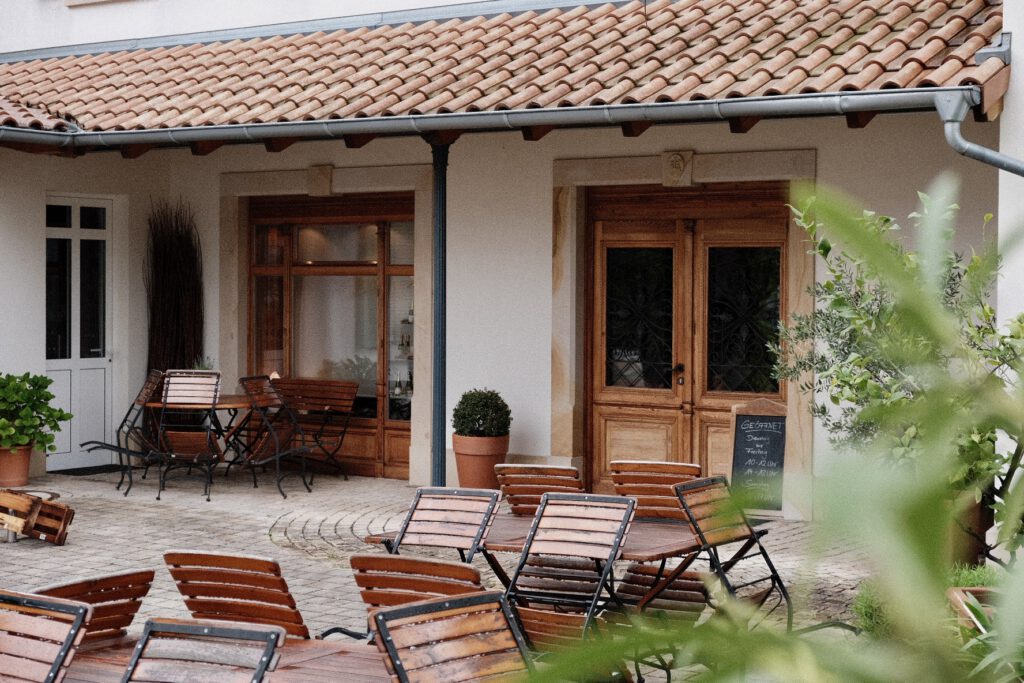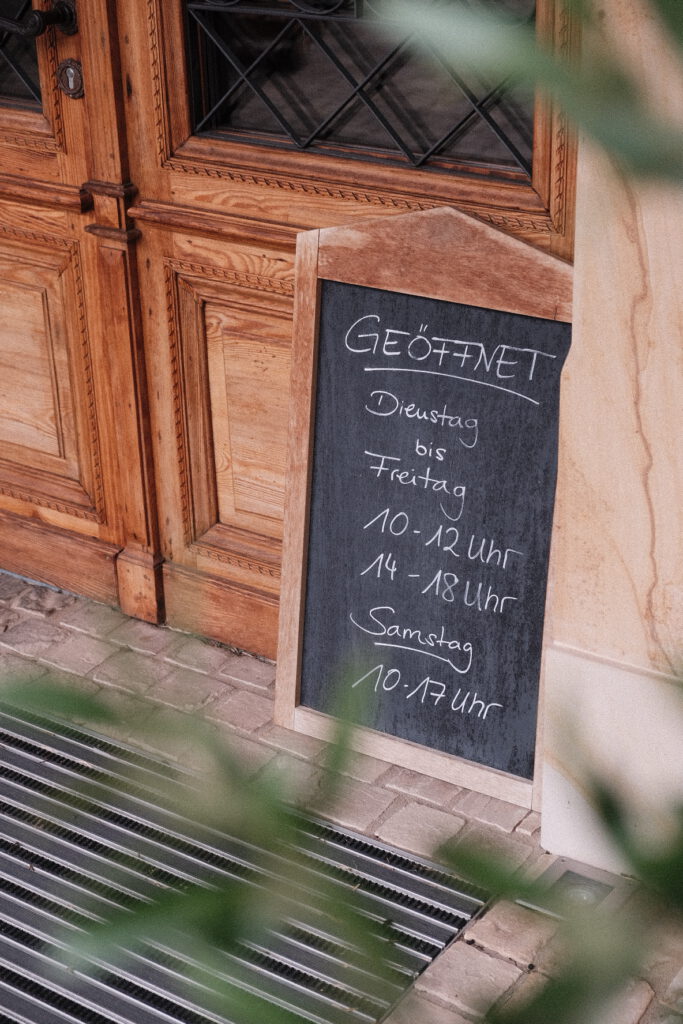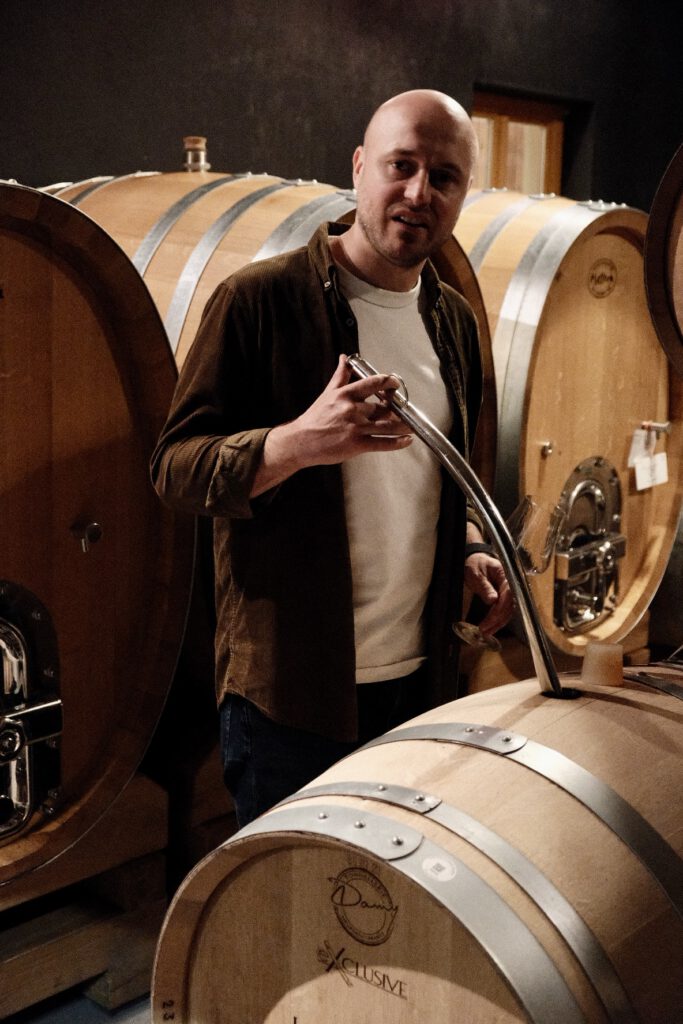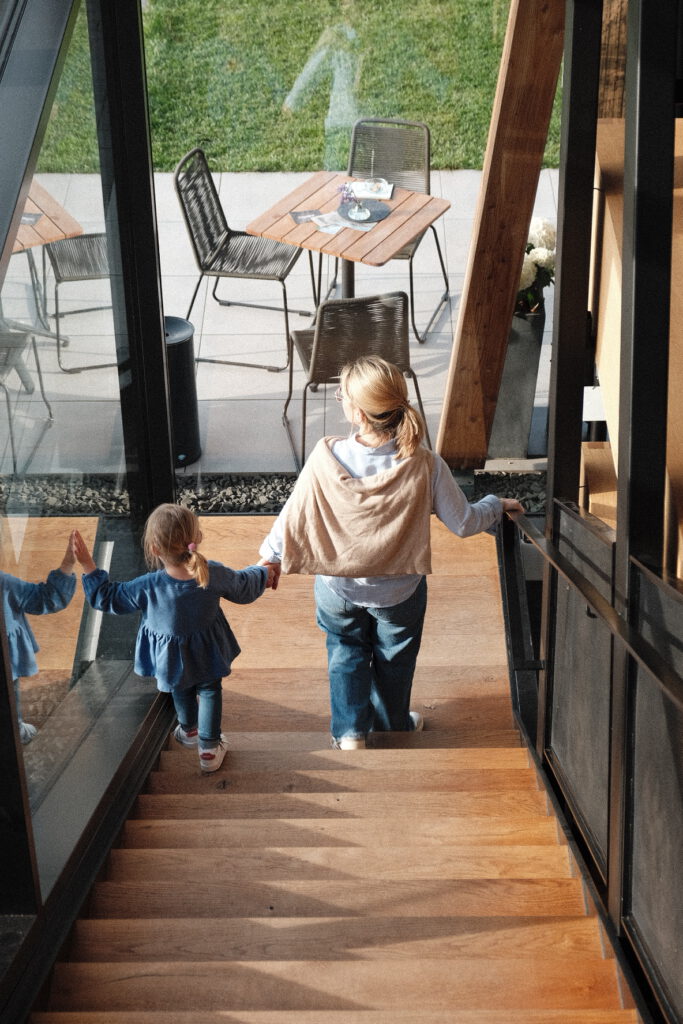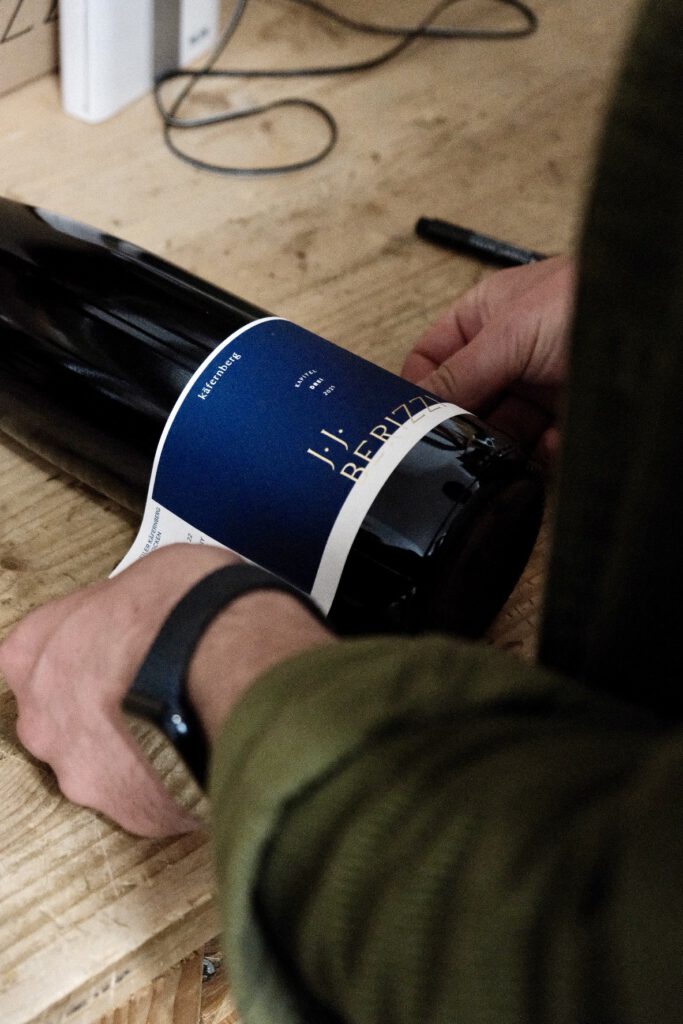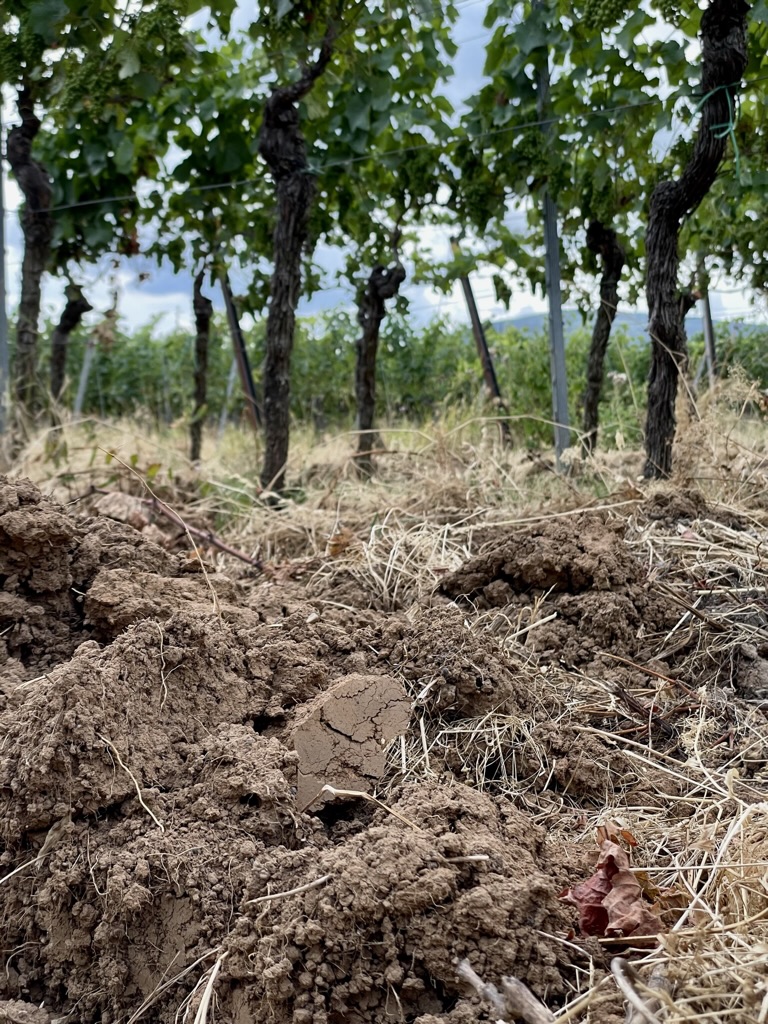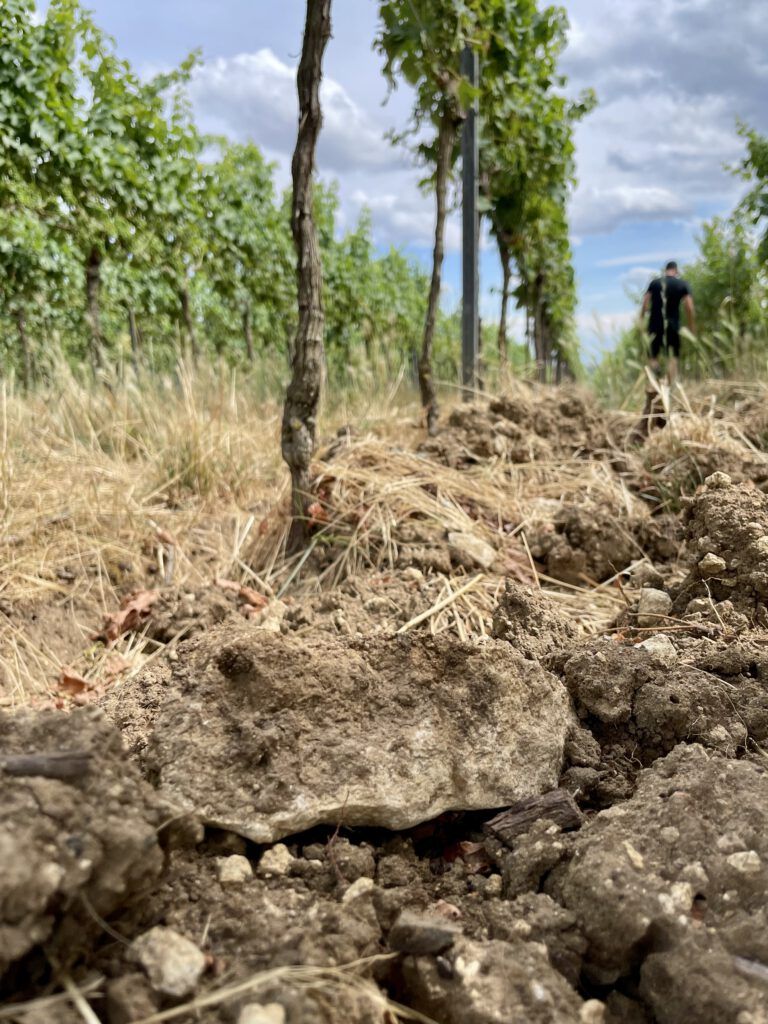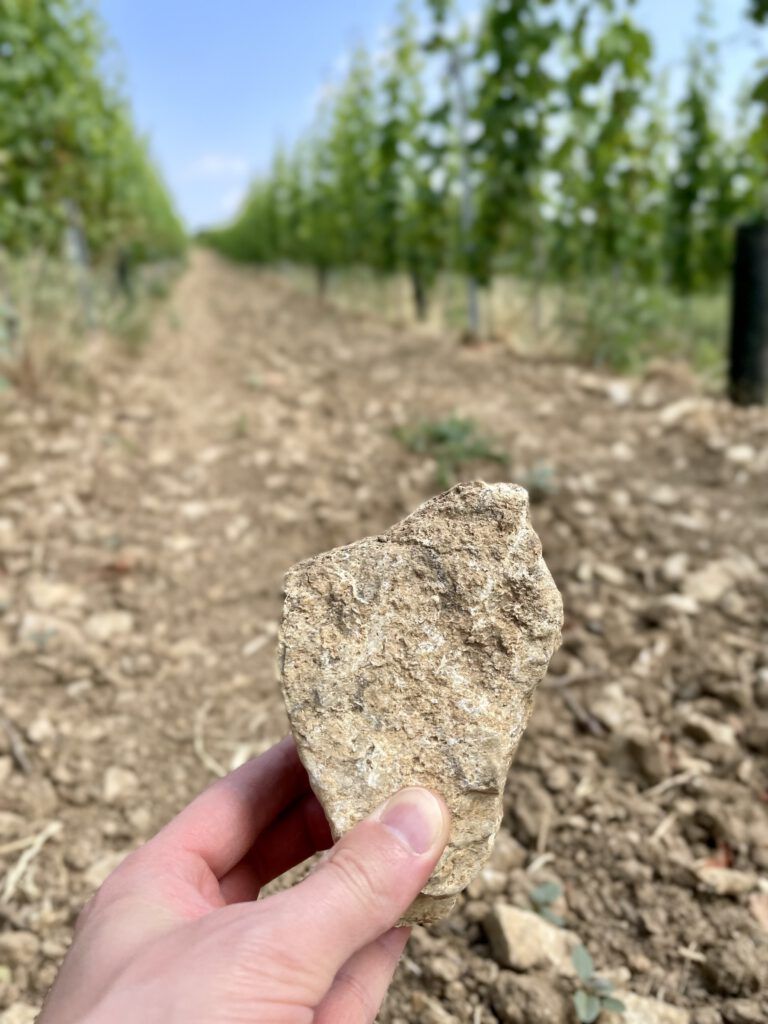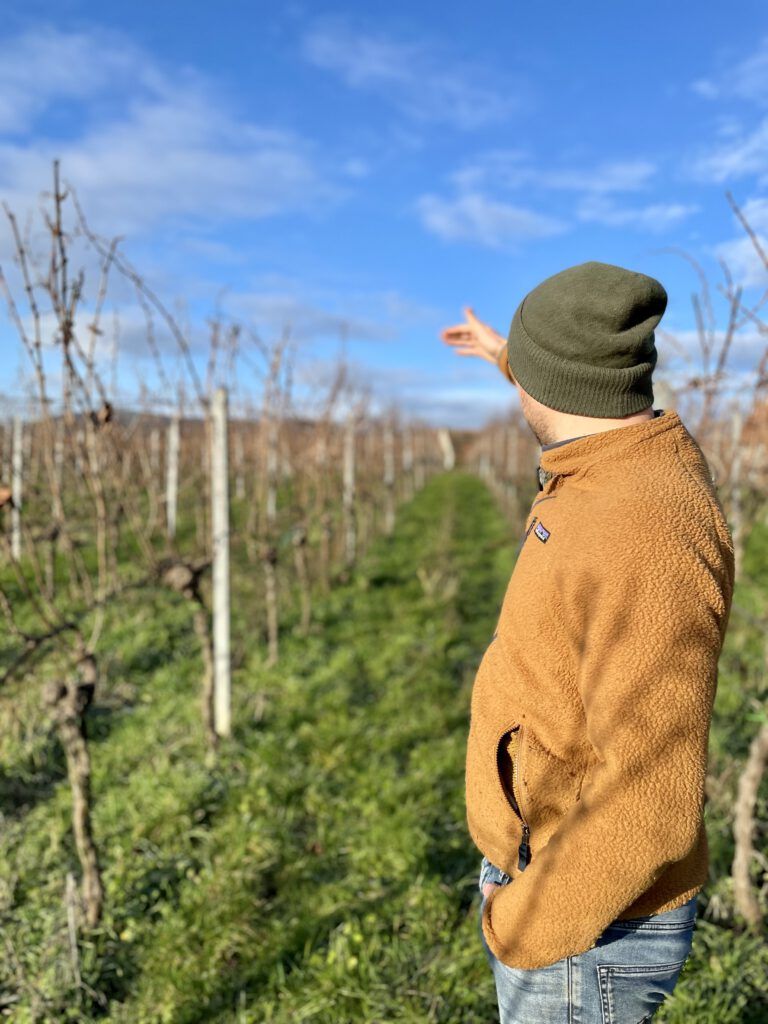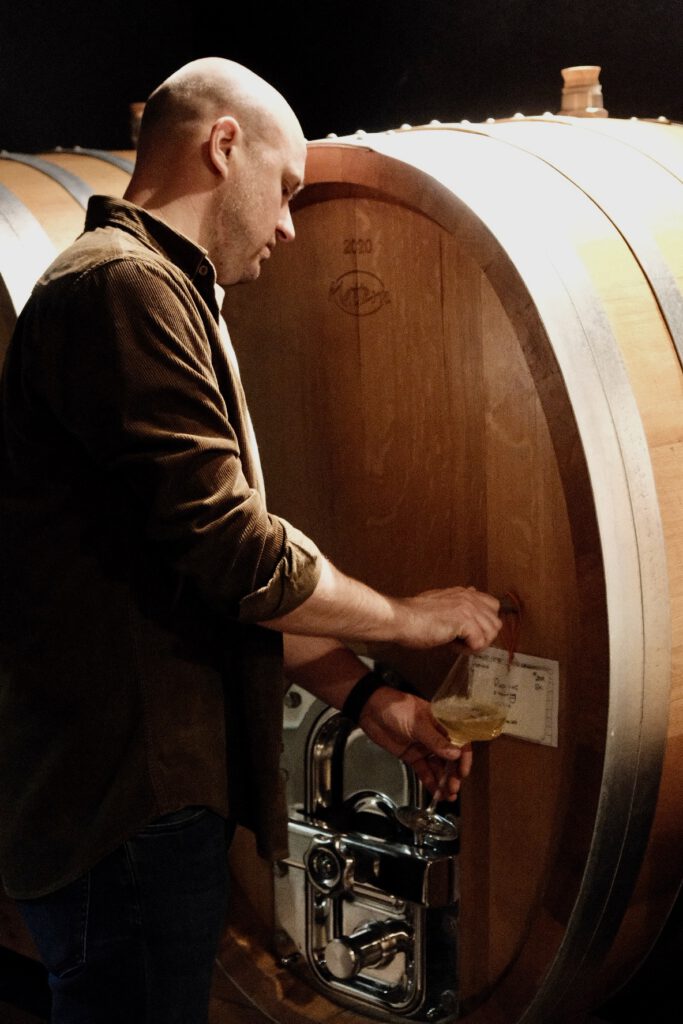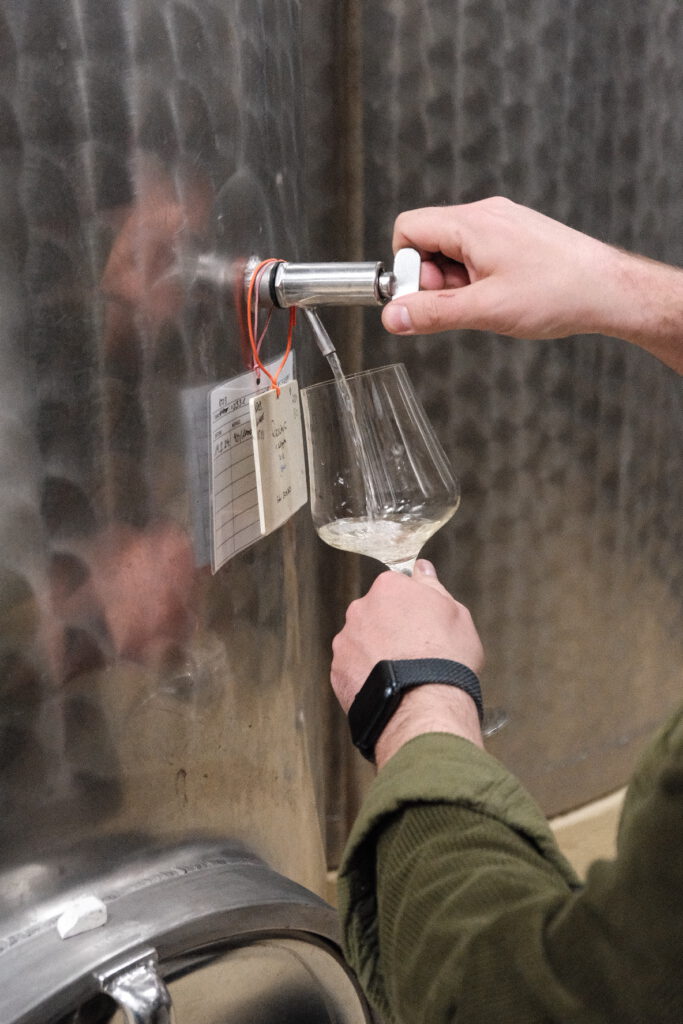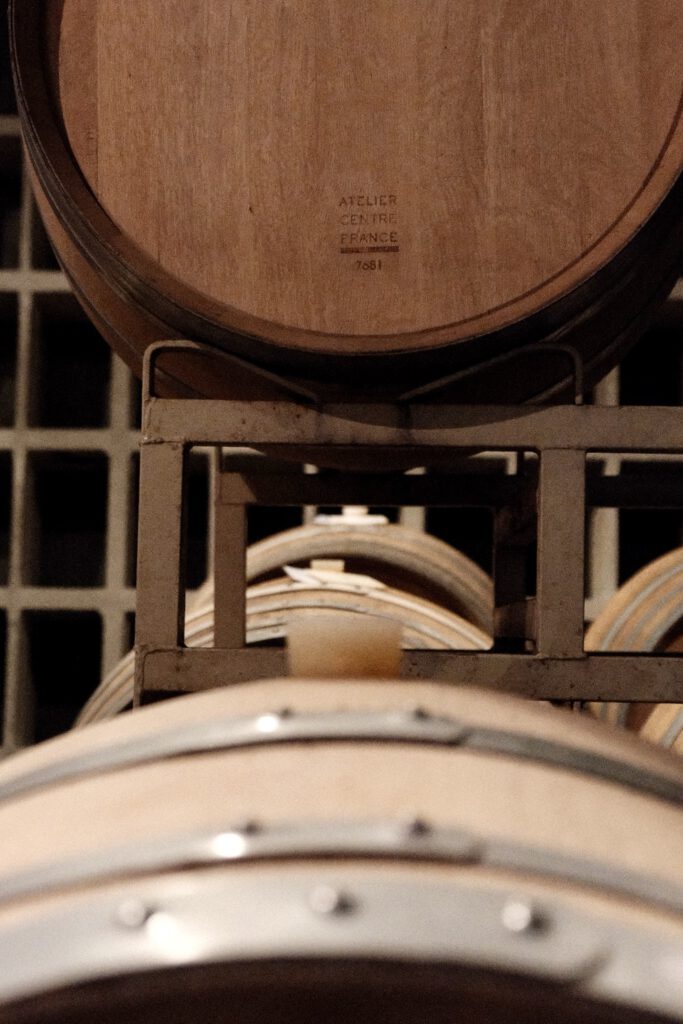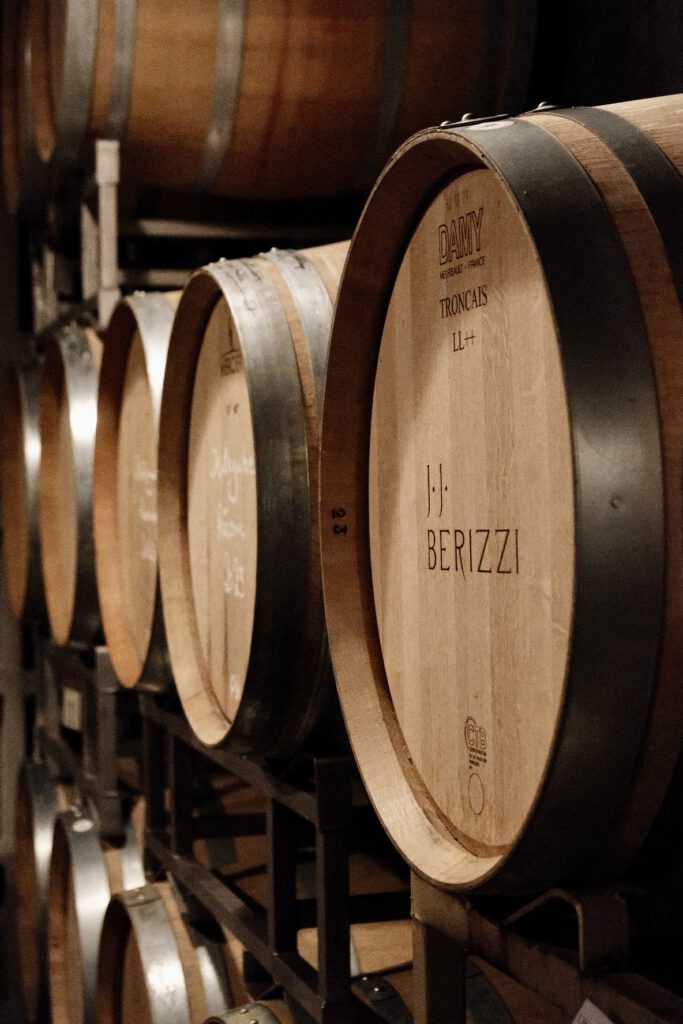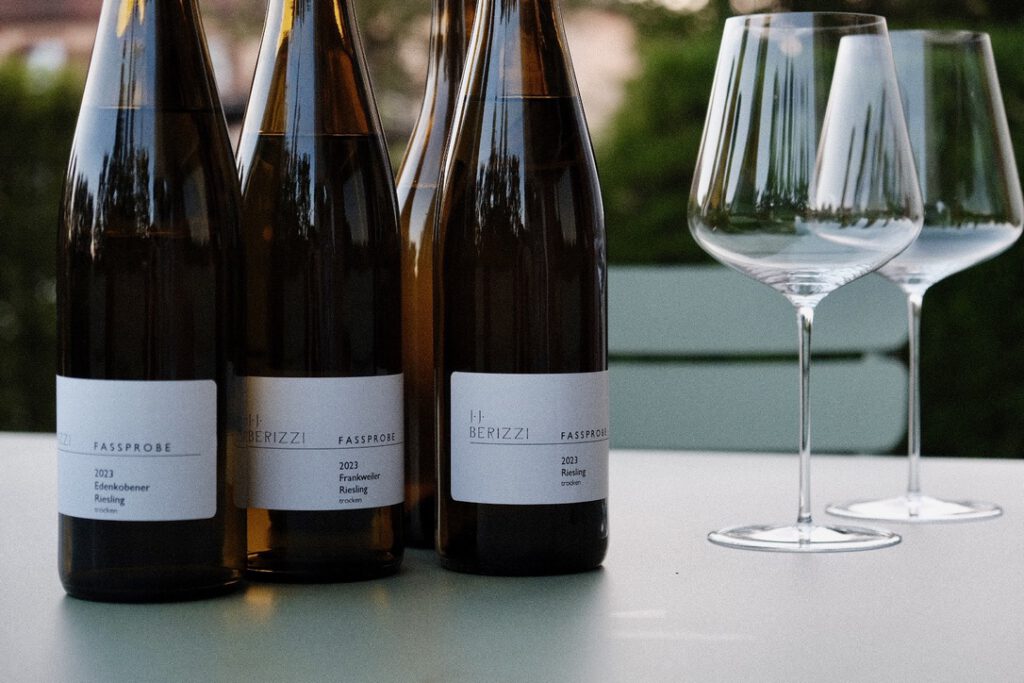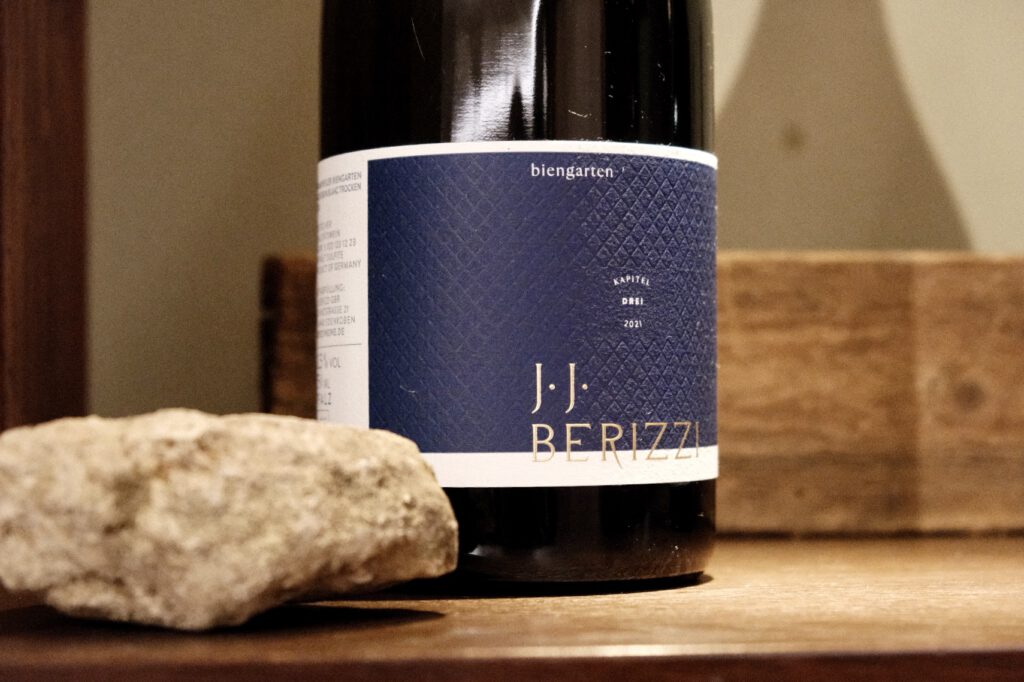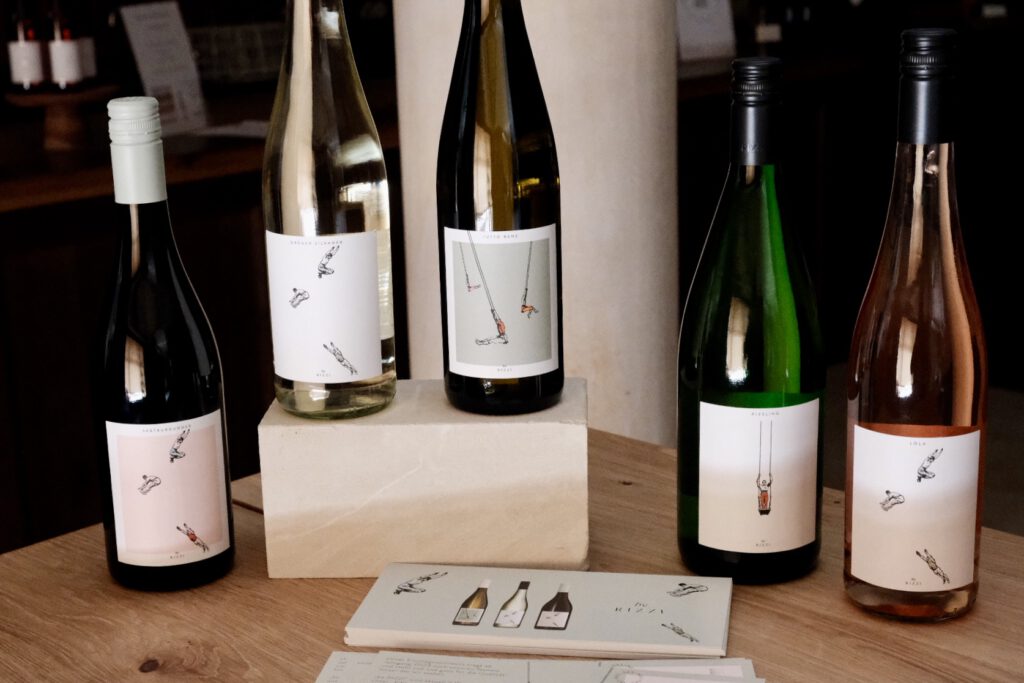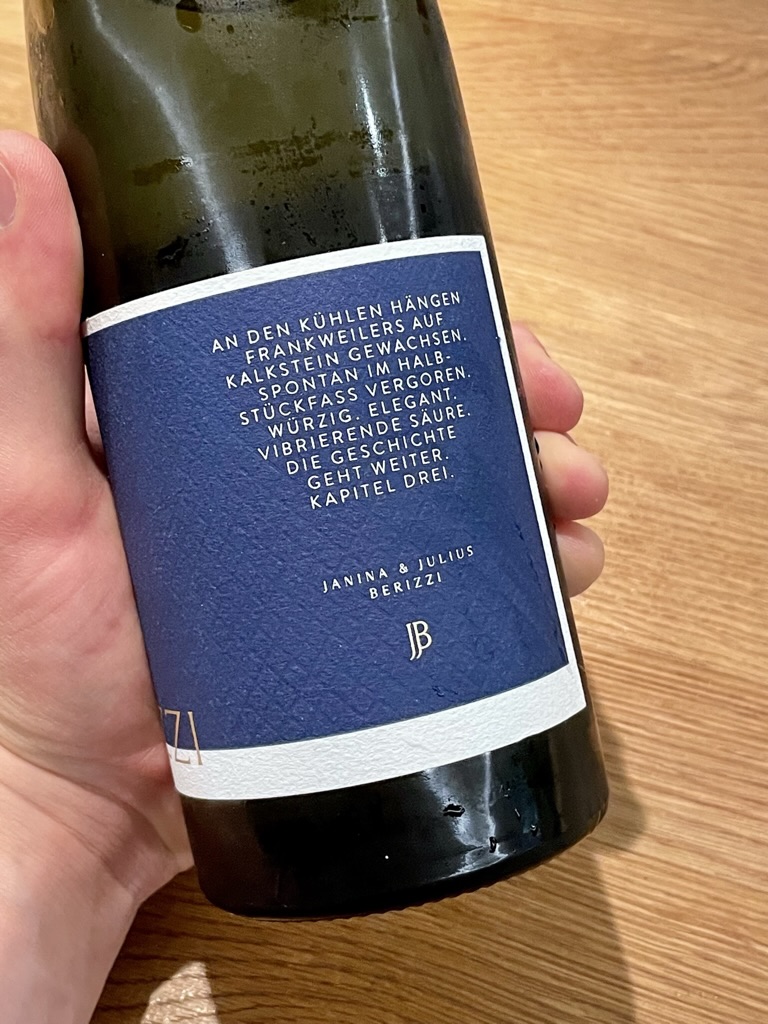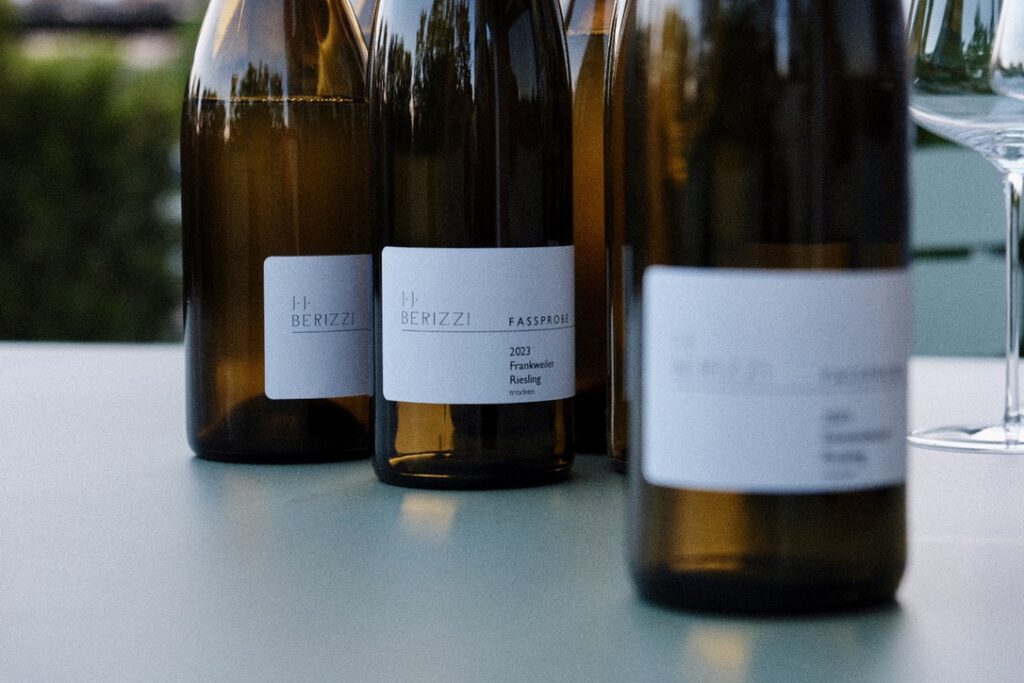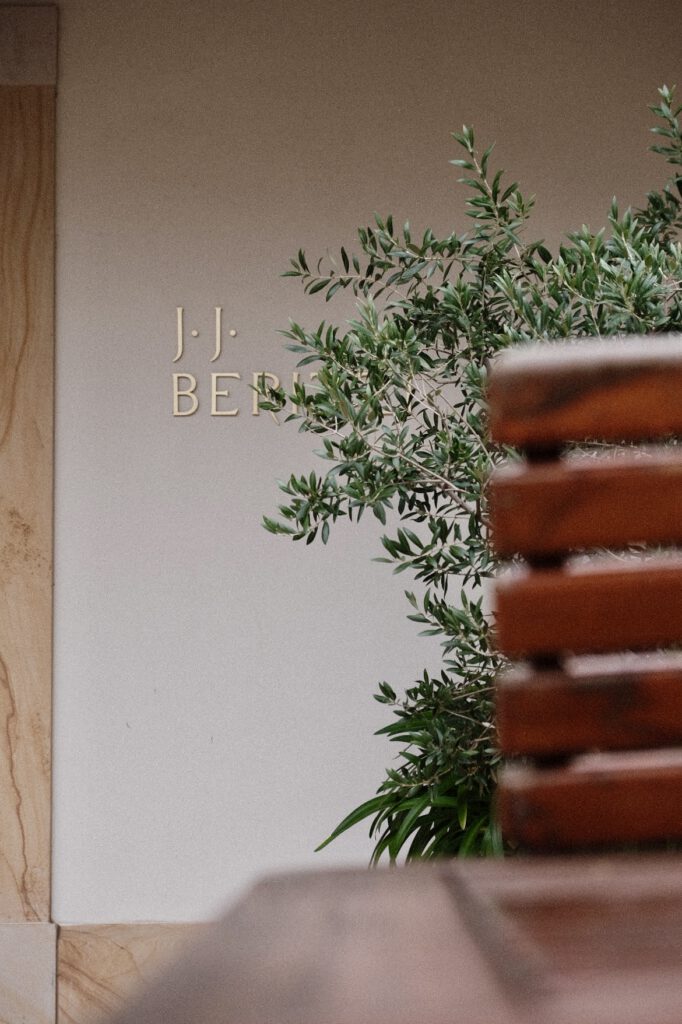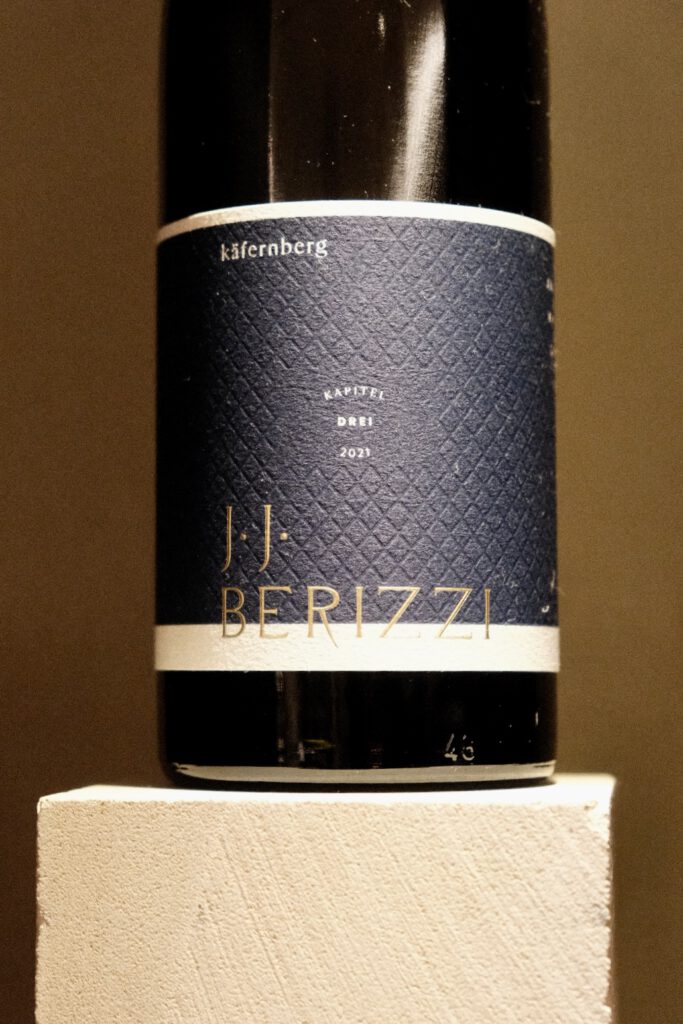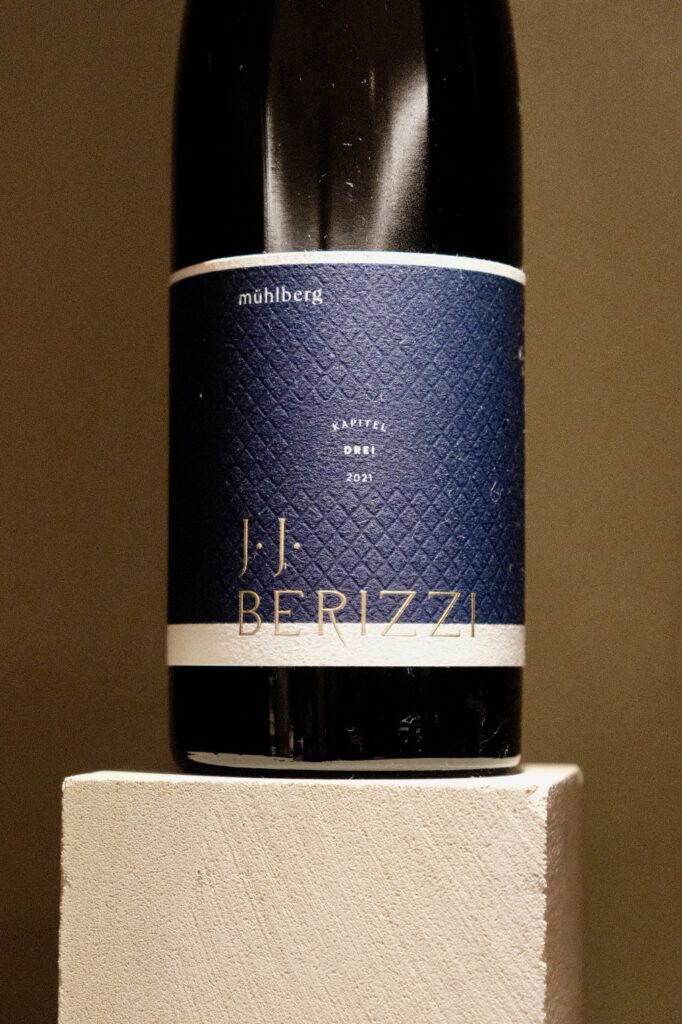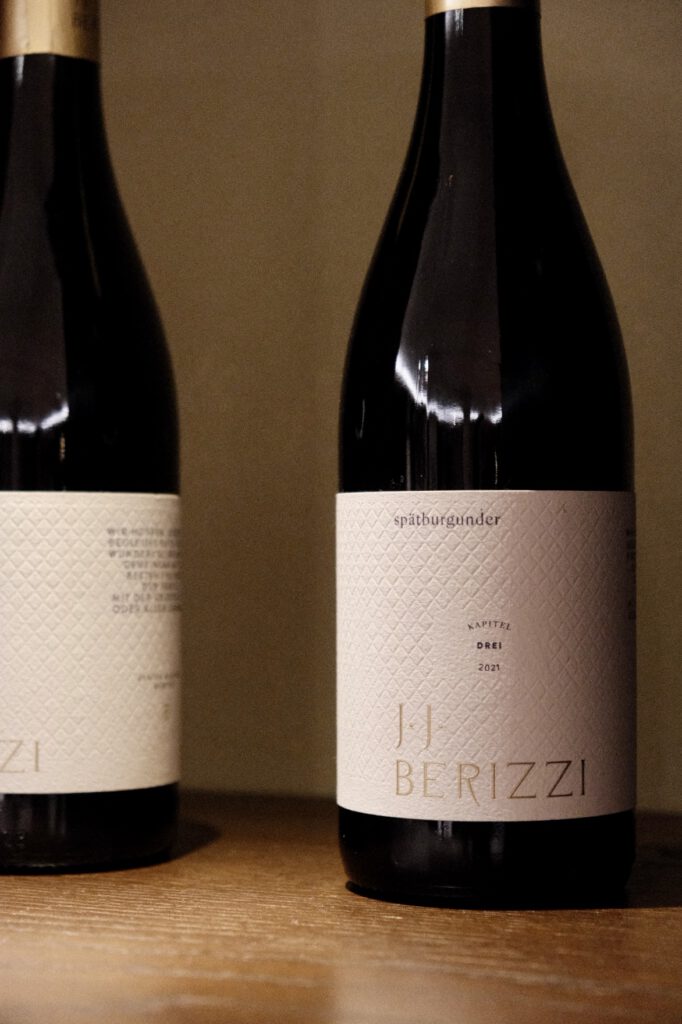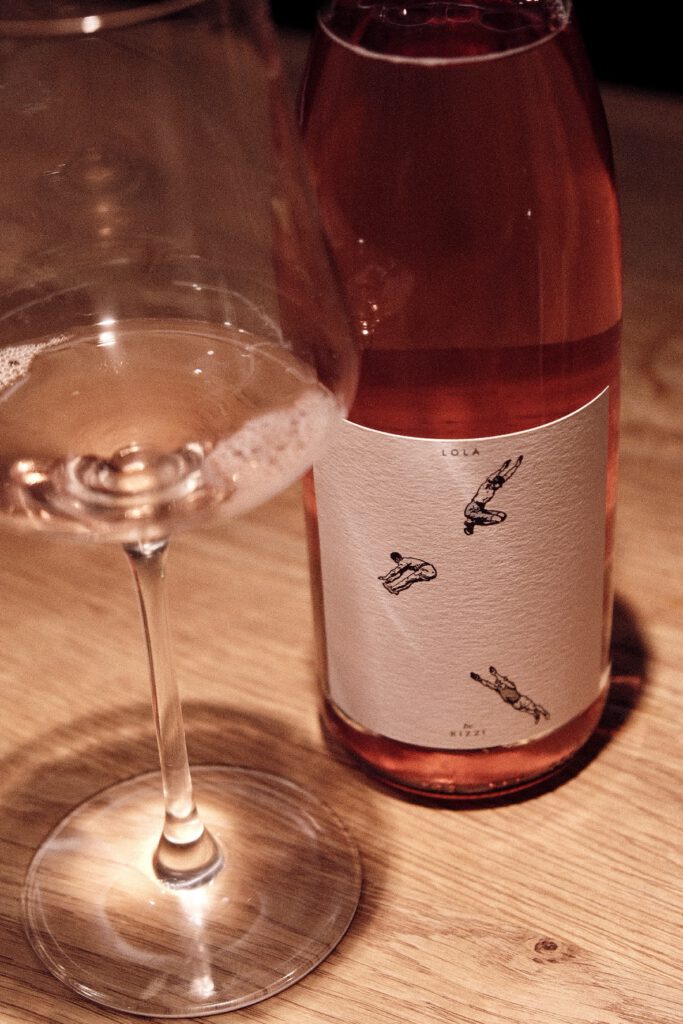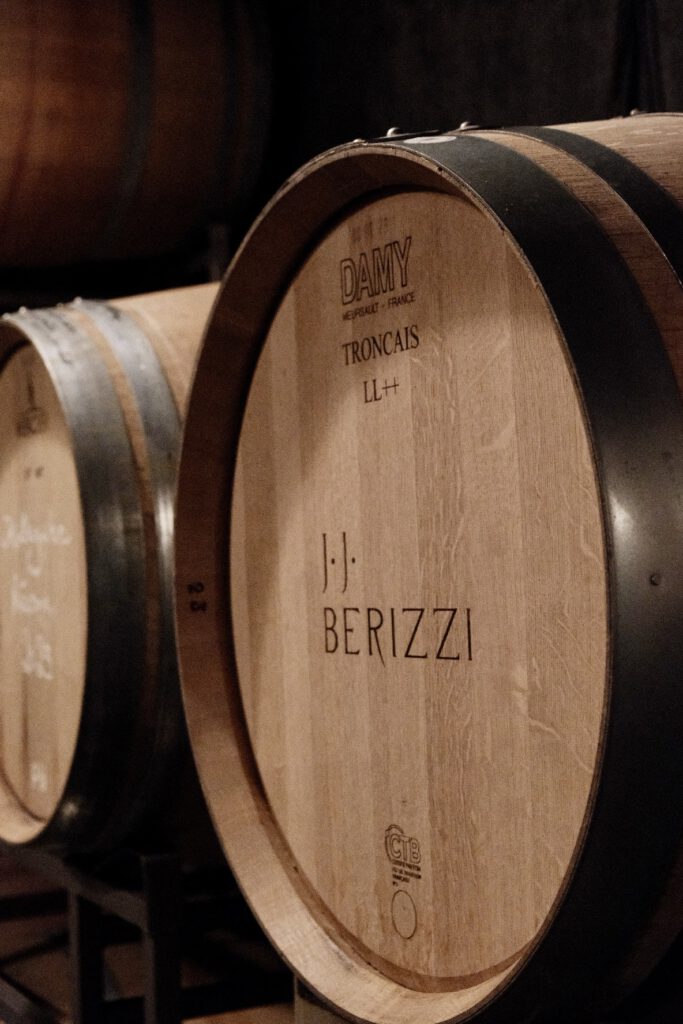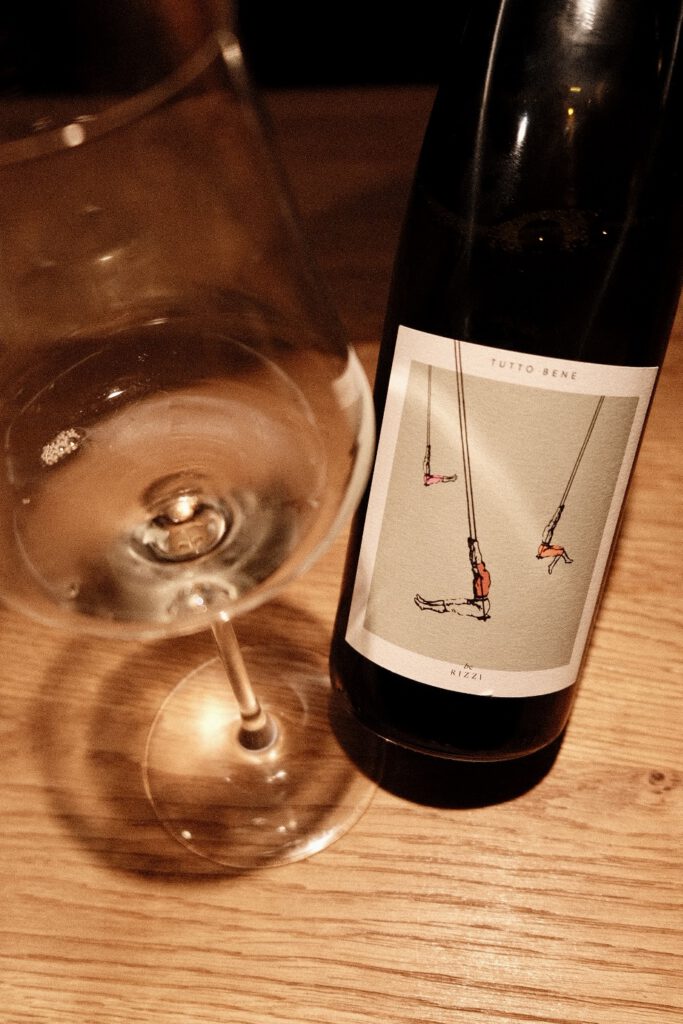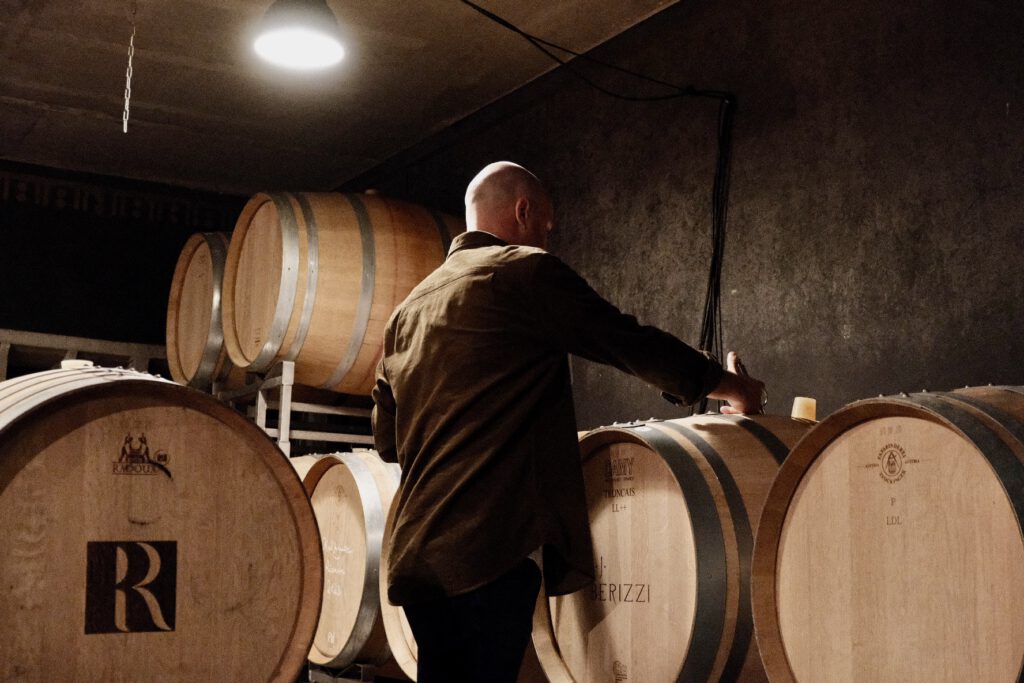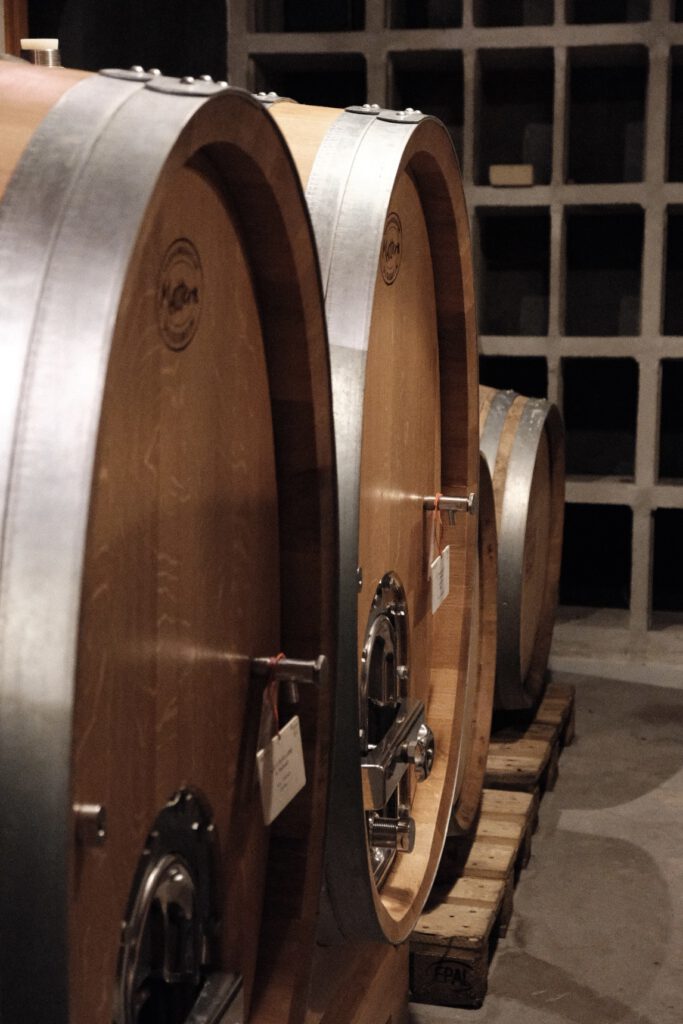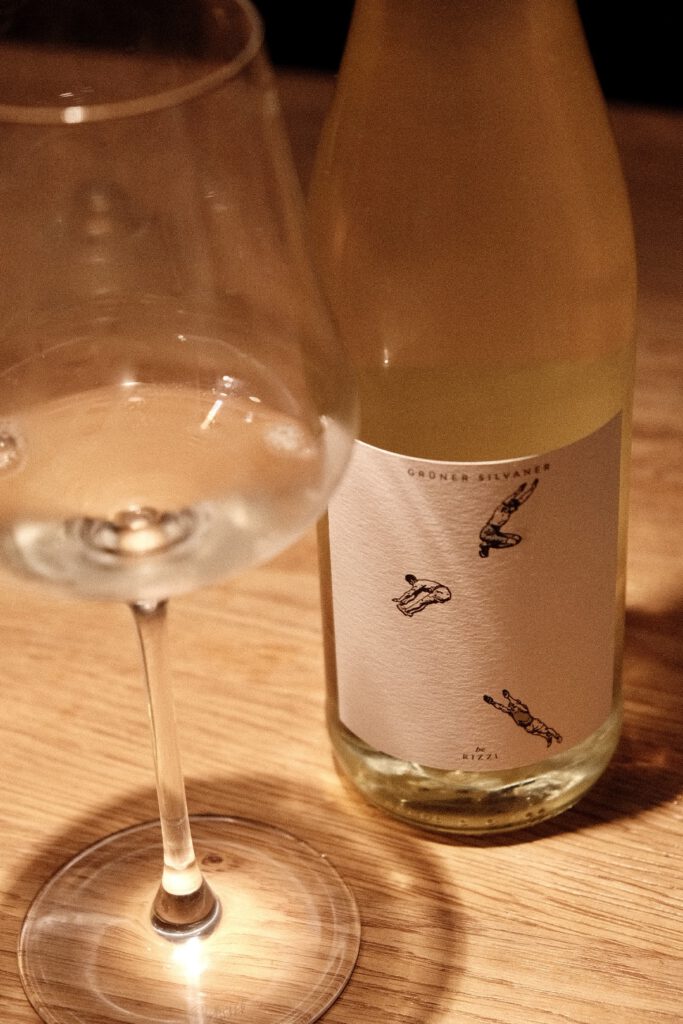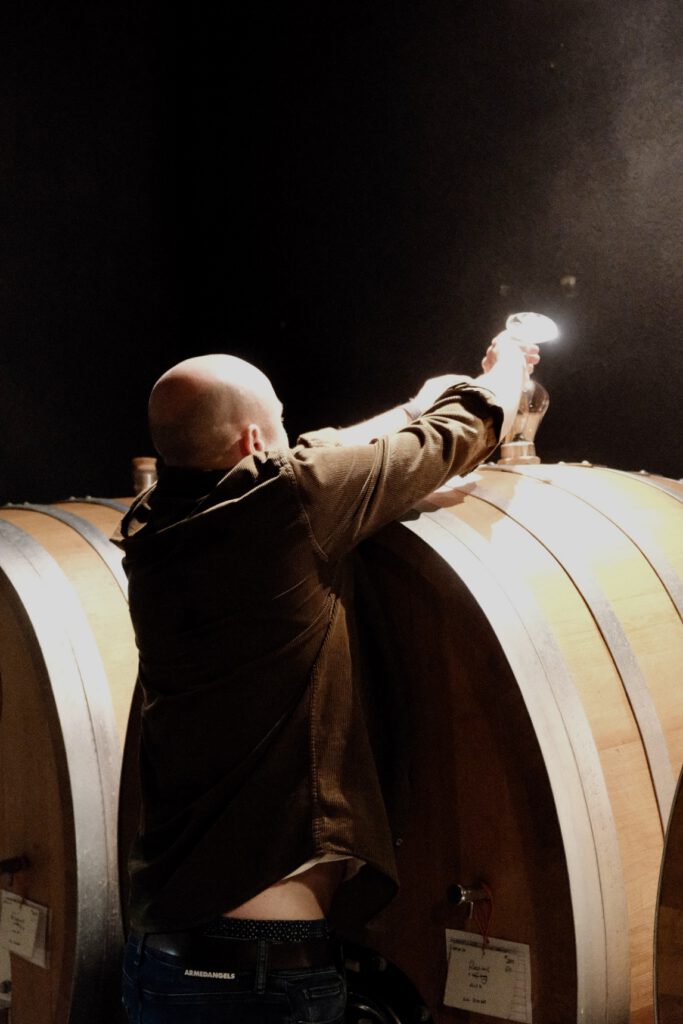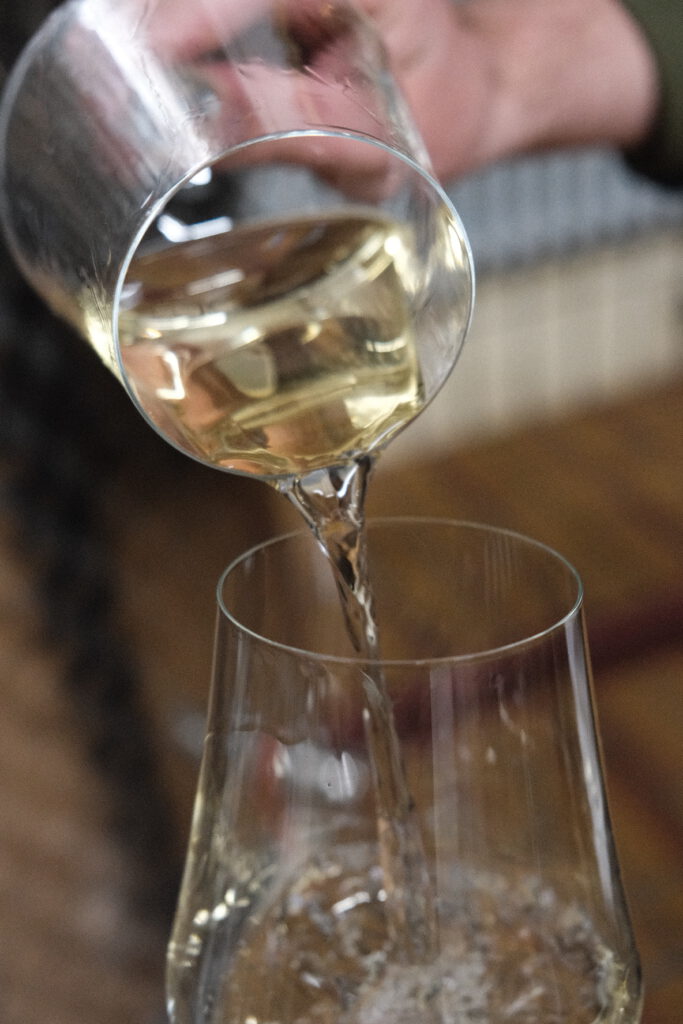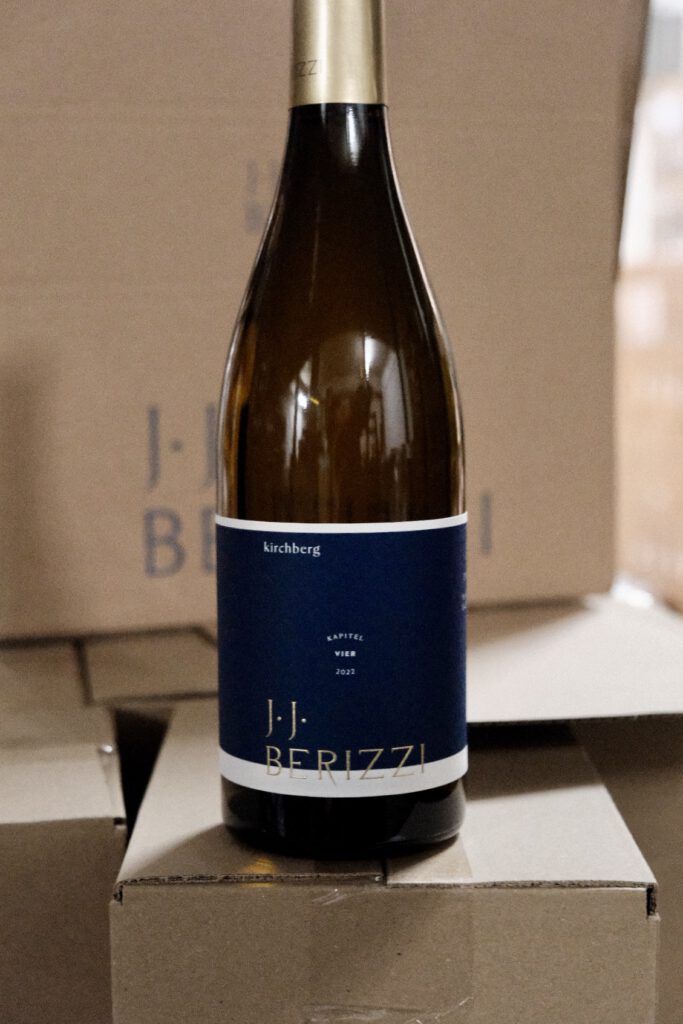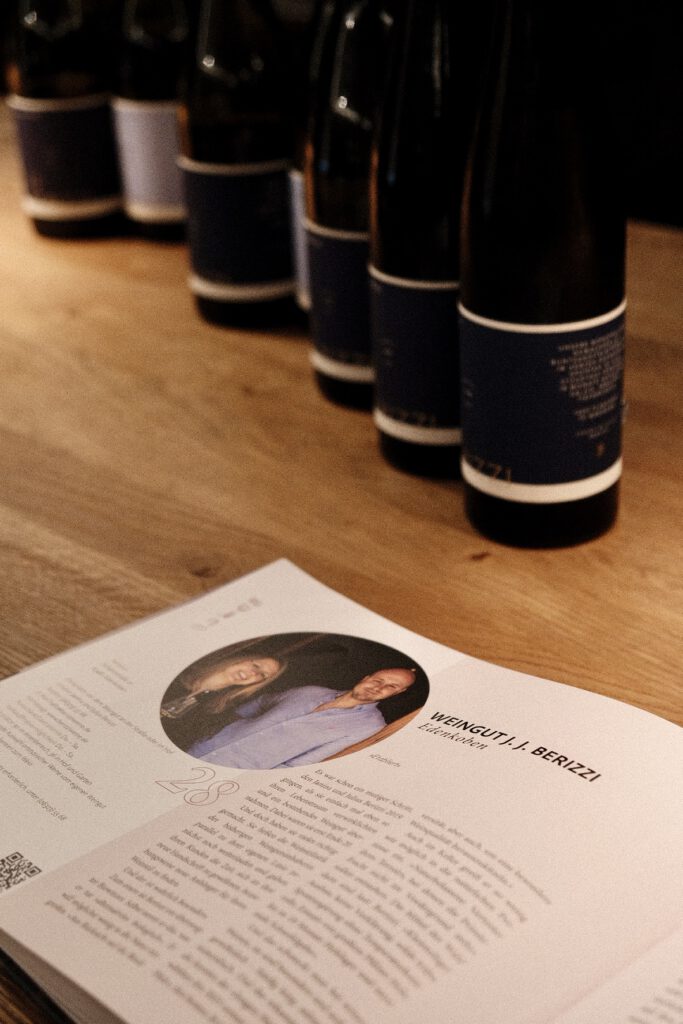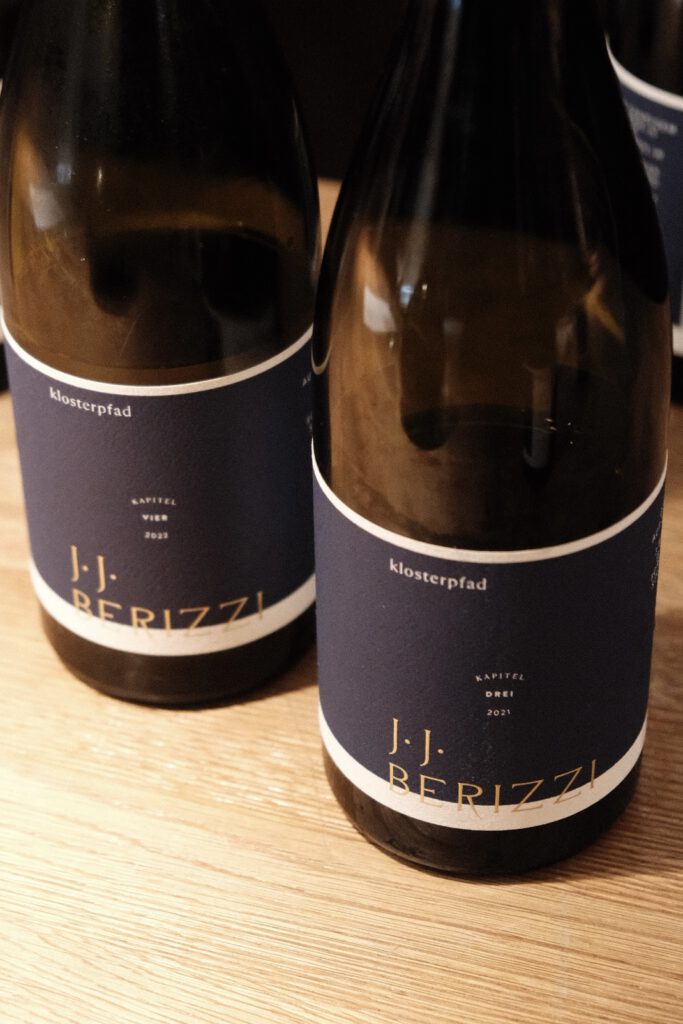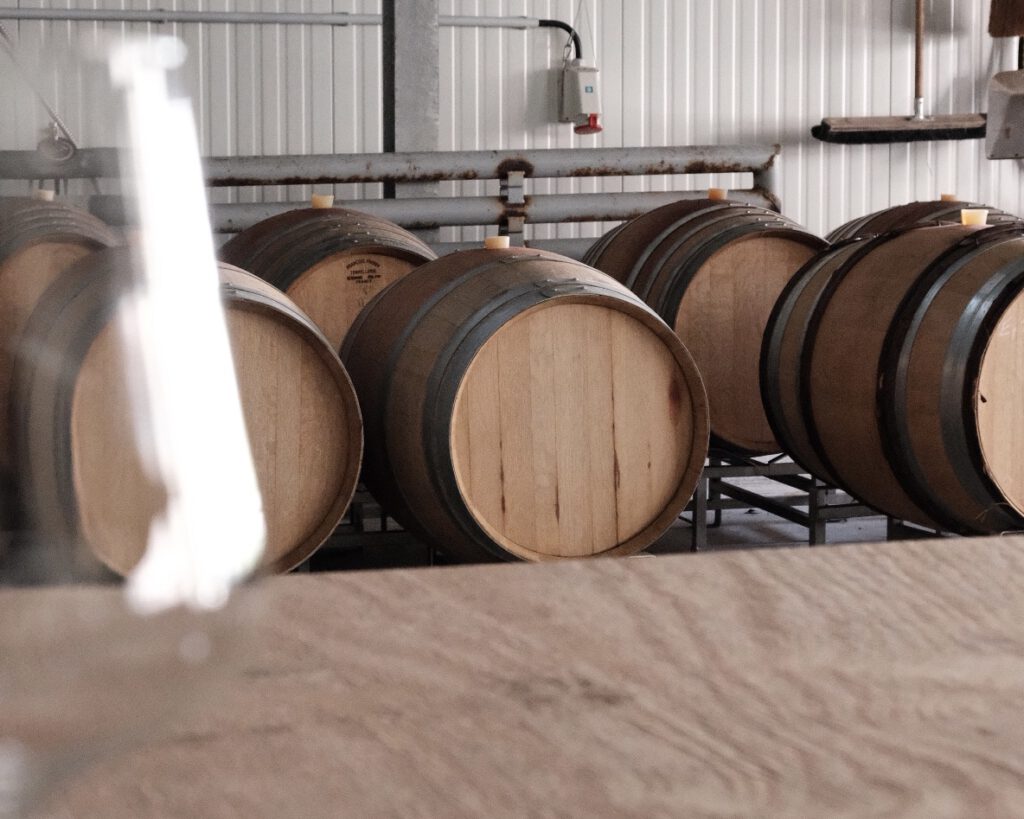Vineyards
“With dedication and a clearly defined focus, imparting their own signature to wines” – that was the long-cherished desire of the duo. et, even the most talented winemaker cannot work miracles without the right vineyard potential. The vineyard is always more crucial than the winemaker. Its potential sets the quality framework within which the winemaker can operate. This understanding is clear to Julius as well. Therefore, he has assembled a portfolio of vineyards in two locations that allows him to bring out his personal signature while also offering the potential for the finest quality wines.
Edenkoben
In Edenkoben, the home of the winery, the soils are predominantly deep loess-loam with some sandstone. In the Mühlberg site, the Berizzi’s monopole vineyard, a significant proportion of sandstone is found in the subsoil. The rock from the Triassic period forms the massif of the Palatinate Forest and is found in many of the best locations along the Haardt.
During the Triassic period, an extremely hot and dry climate prevailed; even the polar regions were frost-free. In the Germanic Basin that runs through Central Europe, sand and clay were deposited in numerous rivers and shallow inland lakes. The mighty sand dunes and dried-up river mud then solidified over millions of years into the mostly red-colored sandstone. This type of soil demands a lot from the vines. It does not retain water well and is also nutrient-poor, with nutrients being easily washed out. However, one advantage is good aeration and therefore good soil warmth, which in turn promotes ripening.
Anmerkung: I associate wines from sandstone with bright fruits, often a salty and hard mouthfeel, and a straightforward, distinctive acidic structure. Furthermore, for me, they are generally more accessible earlier than wines from limestone. This holds true for the Berizzi wines as well. The Rieslings from Mühlberg have consistently shown themselves to be more approachable to me in all tastings compared to those from Käfernberg.
Frankweiler
Käfernberg? Who or what on earth is Käfernberg? This question crossed my mind when I first saw the name on Berizzi’s label. The name takes us toFrankenweiler. The vineyards, which had already been converted to organic viticulture upon the Berizzis’ takeover, offer particularly limestone-rich soils and cool hillside locations, protected from strong winds by the nearby Palatinate Forest. The limestone-rich locations are perfect for Riesling, Chardonnay, and even Sauvignon Blanc, from which Julius, in my opinion, produces one of the best representatives of this grape variety in Germany.
Käfernberg is a site that is not yet well-known, but Julius sees great potential in it. To reassure oneself, one should definitely try his Käfernberg Riesling. Once embraced by its profound, barren, salty structure, dancing acidity, and soft melt, one will not easily forget this wine. I certainly won’t.
Sidenote:A closer look and taste are essential if you want to understand the limestone phenomenon in the Palatinate. Looking closely because limestone here is not all the same, and tasting because it is more subtle in the wine and requires time and air. For those who want to learn more about the effects of limestone soils on wine, I recommend my article “The influence of limestone soils on wine”.
Let’s return to the Berizzis. Julius thinks about wine in the vineyard. Through focused and dedicated work in the vineyard and minimal intervention in the cellar, he aims to create natural interpreters of their terroir. He loves his craft. pH values and taste are more important to him than high Oechsle values. Honest, without frills, but with a lot of sensitivity. You can sense this, especially when you stand with Julius in his vineyards. He passionately talks endlessly about his vines, his soils, and his wine philosophy.
From the beginning, Janina and Julius were clear that they wanted to manage their winery consistently organically. With the 2023 vintage, all their vineyards are now certified.
